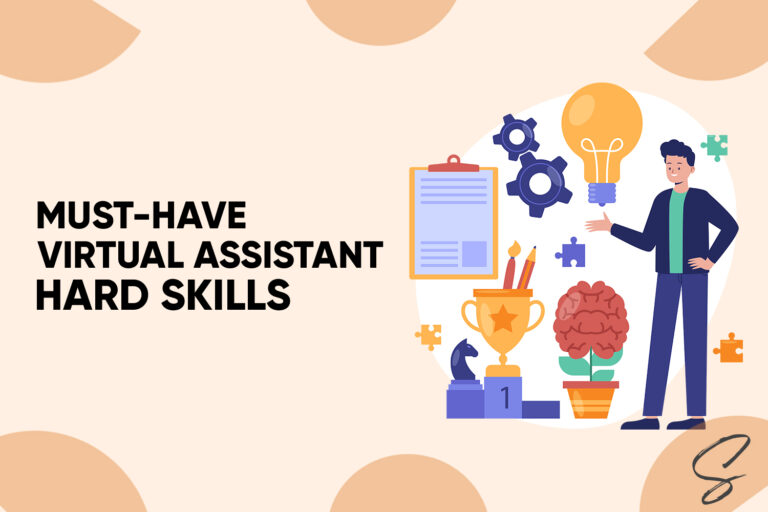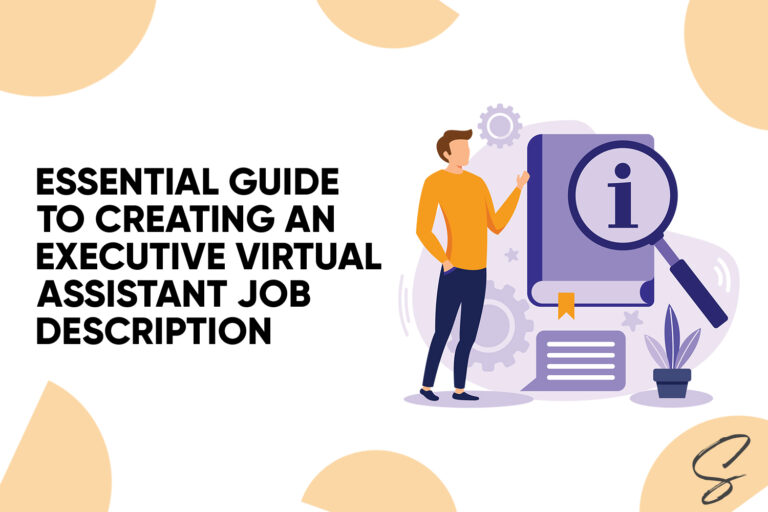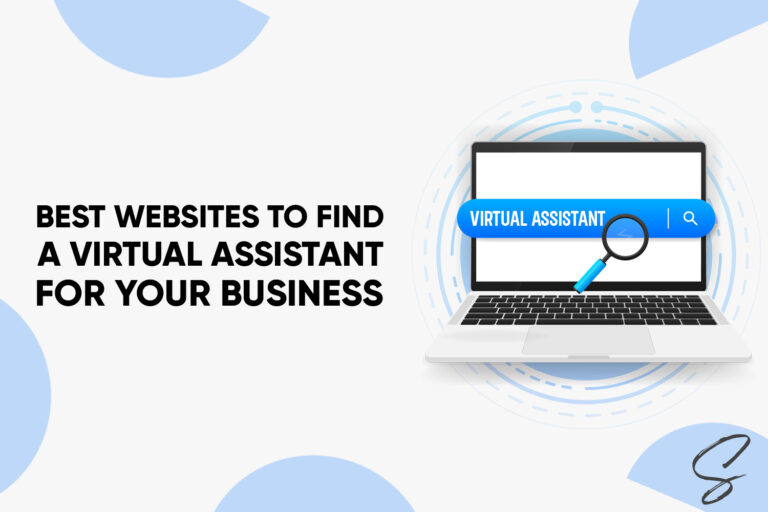You may have reached the point where it makes sense to consider onboarding a virtual assistant.
With a virtual assistant, your responsibilities can be delegated and completed more efficiently so that you can focus on what only YOU can do – moving your business forward!
In this blog post, we’ll explore the steps involved in how to onboard a virtual assistant successfully. That way, you’ll have what you need to make your business operations smoother and less stressful.
A Quick Guide on How to Onboard a Virtual Assistant
Designing a Structured Onboarding Process
Designing a structured onboarding process is the first step in successful virtual assistant onboarding. This includes creating an onboarding plan and setting expectations for you and your virtual assistant.
Your onboarding plan should include the following:
- The type of work you expect the virtual assistant to do;
- How long will it take for them to become completely familiar with your business operations;
- What resources they’ll need to be successful;
- Tech stack;
- An overview of your company policies and procedures; and,
- Data security.
Developing Onboarding Materials and Resources
It is essential to develop onboarding materials and resources for your virtual assistant to ensure they have all the information necessary to complete tasks efficiently.
This includes company policies, procedures, job descriptions, organizational charts, contact lists, software instructions, and other relevant documents or resources.
Before they start their work, provide an orientation so the virtual assistant knows what to expect and how to contact you if they have any questions.
The virtual assistant should clearly understand the scope of work, duties, and responsibilities.
You should provide detailed instructions on what tasks they will be in charge of and expect from them. Outline the deliverables for each assignment and any other requirements or expectations you may have.
Communication protocols, such as response times for messages or emails, should also be made clear.
In addition to having thorough onboarding materials that include company policies and procedures, establishing clear communication channels and expectations with your virtual assistant is paramount for success.
Be clear about deliverables, deadlines, and the overall scope of their work.
Provide regular guidance and feedback so that they can adjust their workflow accordingly.
Foster a culture of open communication with your virtual assistant so they feel comfortable contacting you with any issues or questions.
Also, be responsive and available to answer their queries in a timely manner.
Establish working hours & schedules that outline the hours and days your virtual assistant should work each week.
It’s also essential to set a schedule for checking in with your assistant regularly so that you can monitor their progress and provide feedback or guidance as needed.
Finally, ensure that your virtual assistant understands the importance of taking regular breaks throughout the day to focus on the task.
Outlining the Training Plan and Timeline
Creating a training plan is critical for setting expectations and developing a successful working relationship with your virtual assistant.
Here’s an example of a virtual assistant onboarding plan. Remember to adapt this onboarding plan as needed to align with your business’s unique needs and the specific role of the virtual assistant.
A well-structured onboarding process can create a productive and harmonious collaboration.
Virtual Assistant Onboarding Plan
1. Welcome and Introduction
- Welcome email from the business owner
- Overview of the Small Business’s Mission, Values, and Culture
- Introduction to other team members and their Roles
2. Pre-boarding Preparation
- Send Welcome Package (Company Overview, Policies, etc.)
- Provide access to essential software and tools. For sharing credentials, you can use tools like LastPass.
- Set up your virtual assistant’s company email.
- Add your virtual assistant to the company’s communication channel, for example, Slack.
3. Onboarding Schedule
Week 1:
- Day 1: Welcome video call with the business owner and/or other team members
- Day 2: Introduction to company processes and workflow
- Day 3: Training on basic administrative tasks and tools
- Day 3: Detailed training on specific tasks and duties
- Day 5: Familiarization with Small Business Products/Services
- Day 6 (optional): Collaboration Training with Relevant Departments
Week 2:
- Regular sync-up calls with the owner or other relevant team members to provide feedback and discuss how to resolve challenges.
4. Role-specific Training
- In-depth training sessions on virtual assistant’s core responsibilities
- Access to training materials, tutorials, and resources
5. Communication and Collaboration
- Introduction to communication channels (Email, Chat, Virtual Meetings)
- Clarify expectations for response times and availability.
6. Performance Expectations
- Define measurable performance metrics and goals.
- Establish clear objectives for the virtual assistant’s role.
- Regular check-ins to review progress and address questions
7. Integration with Small Business Culture
- Insights into the business’s unique culture and values
- Foster a sense of belonging and contribution.
8. Feedback and Growth
- Schedule feedback sessions to discuss performance and progress
- Provide constructive feedback on tasks and skills.
- Identify opportunities for skill Enhancement and learning.
9. Data Security and Confidentiality
- Provide a detailed overview of data security measures and privacy policies.
- Provide training on safeguarding sensitive information.
10. Small Business Engagements
- Encourage involvement in small business initiatives.
- Inclusion in informal virtual coffee chats
11. Ongoing Support
- Designate a Point of Contact for Queries and Concerns
- Do regular follow-ups to ensure a smooth transition
- Provide access to ongoing resources
12. Recognition and Appreciation
- Celebrate achievements and milestones.
- Recognize contributions during business updates.
- Express gratitude for the virtual assistant’s role in business success.
Conclusion
It’s clear that onboarding a virtual assistant is not only beneficial for you and your business, but it’s quite a simple process.
With the right preparation and strategy, you’ll have that extra pair of hands ready to go in no time!
Onboarding a virtual assistant might feel like a daunting task at first; however, by following these steps, you can be sure you’re giving them exactly what they need from day one.
So, do yourself a favor and onboard your virtual assistant today!








